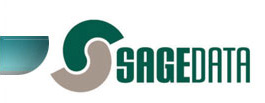There are many attractive new machines being released in this category, and it is easy to be tempted by the latest high tech wizardry, to be carried away by some specific neat feature, or to be influenced by a salesperson with their own agenda.
In reality, there are a number of features to be considered In most cases it is a trade off - as an example, between battery life and weight. We suggest that you use the following check list. First, weight each feature in terms of its importance to you in this specific application. Then mark each hand held computer against each criteria. From there, you can make an informed decision...
Issues to be considered include:
Size:
Generally smaller is better for convenience, but the trade off is against ease of viewing the screen, ease of use for the keyboard, battery life, and perhaps connectivity.
Screen
Choose from grey scale, colour, size, daylight viewing, touch entry capability. Trade off will be for price and battery life.
Scanner capability:
Choose from laser, CCD, one or two dimension, fuzzy logic, image capture.. Trade off is in range for reading, ability to read damaged bar codes, battery life, ability to capture signature or images.
Battery
Choose battery capacity for length of work shift. Consider ease of changing batteries. Consider the ability to use Alkaline cells. Trade off is in weight and availability of the unit.
Reliability
Review specification and construction. Consider dust and water penetration. Consider where the unit is to be used (office, warehouse, street, farmyard). Trade off is in size and flexibility. Also consider the value of the data stored - if the machine fails and data is lost, what is the real cost of that lost data?
Memory Capacity:
Now less of an issue, as larger memory becomes standard.
Consider benefit of removable memory. Consider whether images are used, and whether system is batch or RF linked.
Connectivity.
Could be Bluetooth or 802.11.
Issues to consider include range of operation (RF is good, but effectively tethers the unit), Consider quantity of data to be accessed, requirements for timely data transfer, use of images.
Price.
Always an issue. Deliberately left for last. Consider the life of the unit as five years, and calculate the daily cost. Calculate the loaded labour cost for the personnel using the system, and the cost of suspended operations if the unit goes down. Consider the total cost of developing, installing and maintaining the system, including training. Consider the consequences and cost of potential lost data. Make sure that the investment in the hardware is appropriate.
For any further questions, or for help in selecting the appropriate hand held computer for your application, contact Paul Crozier or Doreen Wallace, by email, or by phone at 613 225 4404.

